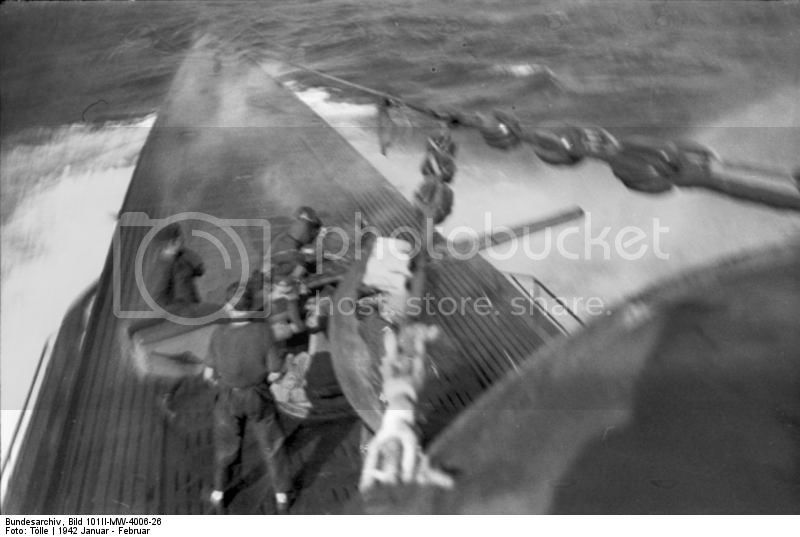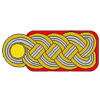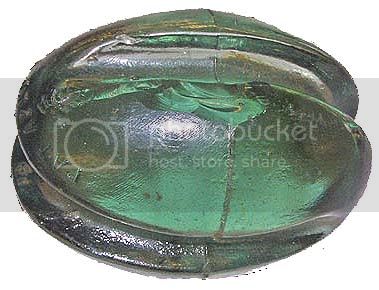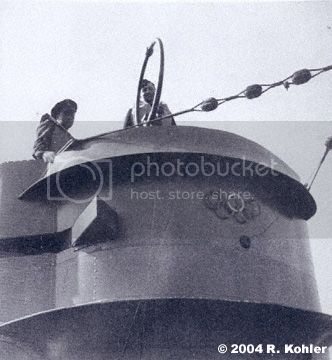 oblong objects on cable? I would like to fabricate or purchase this rigging part for a type IX-A U Boot.Thank you.
oblong objects on cable? I would like to fabricate or purchase this rigging part for a type IX-A U Boot.Thank you.
You are viewing the archived version of the site.
Go to modelshipwrights.com for the current dynamic site!
Go to modelshipwrights.com for the current dynamic site!
General Ship Modeling
Discuss modeling techniques, experiences, and ship modeling in general.
Discuss modeling techniques, experiences, and ship modeling in general.
Hosted by Jim Starkweather
what are these

doppelganger

Joined: March 09, 2010
KitMaker: 557 posts
Model Shipwrights: 81 posts

Posted: Sunday, April 06, 2014 - 03:19 PM UTC

doppelganger

Joined: March 09, 2010
KitMaker: 557 posts
Model Shipwrights: 81 posts

Posted: Sunday, April 06, 2014 - 03:23 PM UTC
What was their function?
Posted: Sunday, April 06, 2014 - 04:00 PM UTC
Quoted Text
What was their function?
David,
I'm reasonably certain those are ceramic (or maybe glass) insulators, very similar in form and function to ones used on guy lines for towers. Do a Google image search for 'egg style insulator' and you'll see what I'm talking about. I would think they should be fairly easy to fabricate without a lot of trouble, but you might be able to find rigging blocks at Modelexpo which could be modified slightly to meet your need. I'll wager the boat pros lurking around the network would know some other places they can be found.

Posted: Sunday, April 06, 2014 - 04:14 PM UTC
Ahoy David,
As Mark stated, they are insulators for the anti-fouling/ aerial cables.
If my translation of a German document is correct, they are
painted green and are a glass/porcelain mix.
The other item, the pale colored thing, is a tensioner.
What scale is the boat you are building?
If in 1:350, the insulators are easily represented with white glue applied to the cables
in tiny balls and built up in layers to form the oval shape.
Cheers,
Joe
As Mark stated, they are insulators for the anti-fouling/ aerial cables.
If my translation of a German document is correct, they are
painted green and are a glass/porcelain mix.
The other item, the pale colored thing, is a tensioner.
What scale is the boat you are building?
If in 1:350, the insulators are easily represented with white glue applied to the cables
in tiny balls and built up in layers to form the oval shape.
Cheers,
Joe
TAFFY3

Joined: January 21, 2008
KitMaker: 2,531 posts
Model Shipwrights: 1,244 posts

Posted: Sunday, April 06, 2014 - 10:28 PM UTC
Here's a picture of the ones that I did for my 1/35 scale Bronco Type XXIII sub.

I used white metal 'blocks' meant for rigging sailing ship models. They came from Bluejacket Shipfitters. For smaller scales you could also use small beads for making jewelry, sold in craft stores like Michaels or Hobby Lobby. Al
Al

I used white metal 'blocks' meant for rigging sailing ship models. They came from Bluejacket Shipfitters. For smaller scales you could also use small beads for making jewelry, sold in craft stores like Michaels or Hobby Lobby.
 Al
Al
doppelganger

Joined: March 09, 2010
KitMaker: 557 posts
Model Shipwrights: 81 posts

Posted: Monday, April 07, 2014 - 04:29 PM UTC

doppelganger

Joined: March 09, 2010
KitMaker: 557 posts
Model Shipwrights: 81 posts

Posted: Monday, April 07, 2014 - 04:46 PM UTC
Posted: Monday, April 07, 2014 - 05:28 PM UTC
Quoted Text
Thanks for the tipwhat is interesting is that the cable seems to branch off into four sections to interface with the glass insulator.I think that is what I am viewing in the posted photo
In photos it does look like a single continuous cable split in four going around the insulator, but in fact the insulator separates two sections of cable, each terminating in a loop around the insulator. The loops go around the insulator at 90 degrees to one another, and if you look at the close-up of the insulator you posted you can see the two channels for the opposing loops. The reason this arrangement is used is because it puts the load on the insulator in compression, rather than in tension, so it much less likely to break under the strain.

TAFFY3

Joined: January 21, 2008
KitMaker: 2,531 posts
Model Shipwrights: 1,244 posts

Posted: Monday, April 07, 2014 - 10:51 PM UTC
Quoted Text
A good pic of the insulators.What was the cable for? on deck safetynothing like the huge ugly ship I served on.Those DKM sailors were quite brave.
It is an antenna, in the photo note the lead wire running from the 'cable' to the front of the conning tower (Turm) where it enters through a small insulator. You can also see this lead in the photo of the XXIII that I posted.
 Al
Al
doppelganger

Joined: March 09, 2010
KitMaker: 557 posts
Model Shipwrights: 81 posts

Posted: Tuesday, April 08, 2014 - 08:04 PM UTC
Quoted Text
very interesting, I think I can duplicate that.Neat part about building models is being able to expand my knowledge.....how did this thing really work? Quoted TextThanks for the tipwhat is interesting is that the cable seems to branch off into four sections to interface with the glass insulator.I think that is what I am viewing in the posted photo
In photos it does look like a single continuous cable split in four going around the insulator, but in fact the insulator separates two sections of cable, each terminating in a loop around the insulator. The loops go around the insulator at 90 degrees to one another, and if you look at the close-up of the insulator you posted you can see the two channels for the opposing loops. The reason this arrangement is used is because it puts the load on the insulator in compression, rather than in tension, so it much less likely to break under the strain.



doppelganger

Joined: March 09, 2010
KitMaker: 557 posts
Model Shipwrights: 81 posts

Posted: Tuesday, April 08, 2014 - 08:10 PM UTC
Quoted Text
I will add the cable running to the interior,I had not taken that into account.I see that you are working in a larger scale,That appeals to me.Quoted TextA good pic of the insulators.What was the cable for? on deck safetynothing like the huge ugly ship I served on.Those DKM sailors were quite brave.
It is an antenna, in the photo note the lead wire running from the 'cable' to the front of the conning tower (Turm) where it enters through a small insulator. You can also see this lead in the photo of the XXIII that I posted.Al

doppelganger

Joined: March 09, 2010
KitMaker: 557 posts
Model Shipwrights: 81 posts

Posted: Tuesday, April 08, 2014 - 08:12 PM UTC
So......if the cable running to the bow is an antennae what was the round device on the bridge? I initially thought that was the antennae.
Posted: Tuesday, April 08, 2014 - 08:58 PM UTC
Quoted Text
So......if the cable running to the bow is an antennae what was the round device on the bridge? I initially thought that was the antennae.
It's an antenna. Different radio bands necessarily required different antenna configurations.

TAFFY3

Joined: January 21, 2008
KitMaker: 2,531 posts
Model Shipwrights: 1,244 posts

Posted: Tuesday, April 08, 2014 - 10:33 PM UTC
Quoted Text
So......if the cable running to the bow is an antennae what was the round device on the bridge? I initially thought that was the antennae.
David, I think that maybe you're referring to the DF (Direction Finding) Loop. That is an antenna for a direction finding receiver for locating radio transmission sources. You rotate the loop still the signal is strongest and you get a bearing to the transmitter. Two boats working together could pinpoint the exact location of a target by using triangulation. Later in the war boats also carried various radar warning antennae. I'll refer you to the pic of my Type XXIII again, note the circular antenna atop the Schnorkel, that is an antenna for the FuMB7 'Naxos' air to surface radar warning receiver.
 Al
AlTAFFY3

Joined: January 21, 2008
KitMaker: 2,531 posts
Model Shipwrights: 1,244 posts

Posted: Tuesday, April 08, 2014 - 10:59 PM UTC
[Quoted text] I see that you are working in a larger scale,That appeals to me.
I like the detail that you can see in the larger scales and I find them easier to work in. That's the Bronco kit of the Type XXIII Coastal U-boat in 1/35 scale. It's about three feet long, about the same length as the 1/72 scale Revell model of the larger Type VIIC , but much more massive. The VIIC model would easily fit in side the hull of the XXIII. It was a good kit, easy to build. My only complaint would be a lack of some detail, particularly in the bridge area. Al
Al
I like the detail that you can see in the larger scales and I find them easier to work in. That's the Bronco kit of the Type XXIII Coastal U-boat in 1/35 scale. It's about three feet long, about the same length as the 1/72 scale Revell model of the larger Type VIIC , but much more massive. The VIIC model would easily fit in side the hull of the XXIII. It was a good kit, easy to build. My only complaint would be a lack of some detail, particularly in the bridge area.
 Al
Al |
















